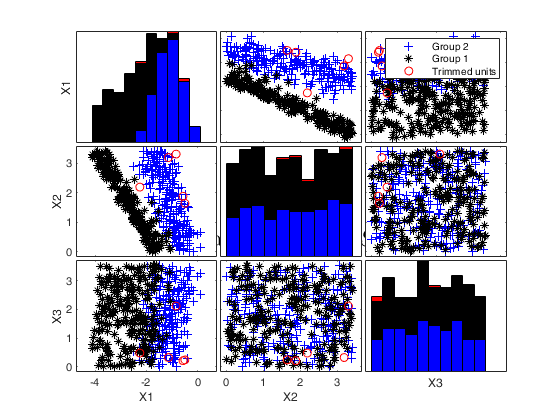rlga
rlga performs robust linear grouping analysis
Description
Examples
Related Examples
Input Arguments
Output Arguments
References
Garcia-Escudero, L.A., Gordaliza, A., San Martin, R., Van Aelst, S. and Zamar, R. (2009), Robust linear clustering, "Journal of the Royal Statistical Society: Series B", Vol. 71, pp. 301-318.
[doi: 10.1111/j.1467-9868.2008.00682.x]
 Generate mixture of regression using MixSimReg, with an average
overlapping at centroids = 0.
Generate mixture of regression using MixSimReg, with an average
overlapping at centroids = 0.